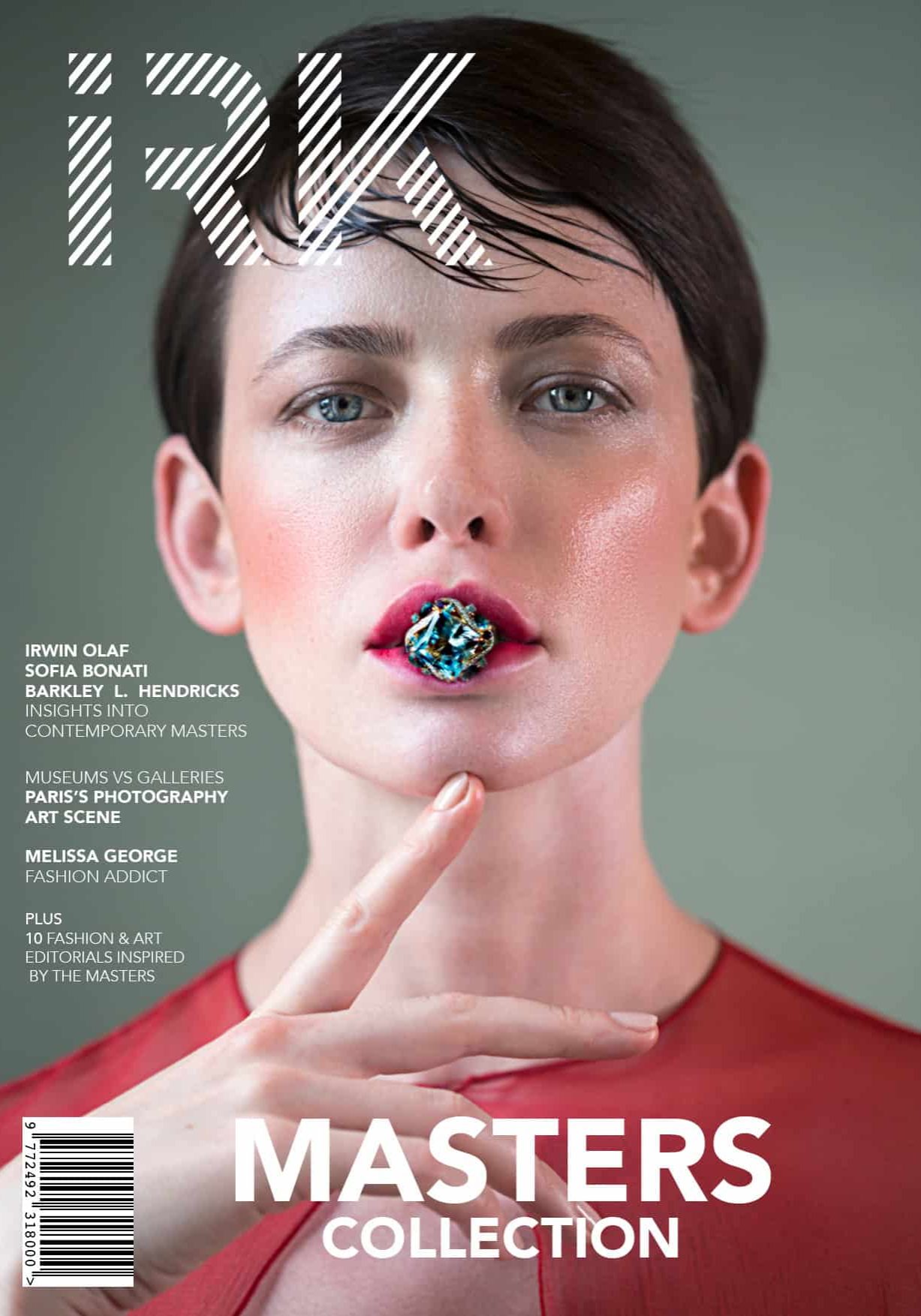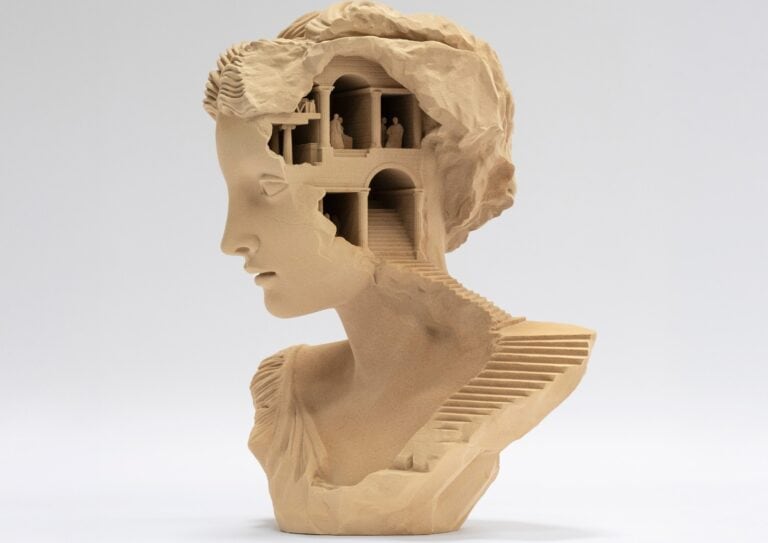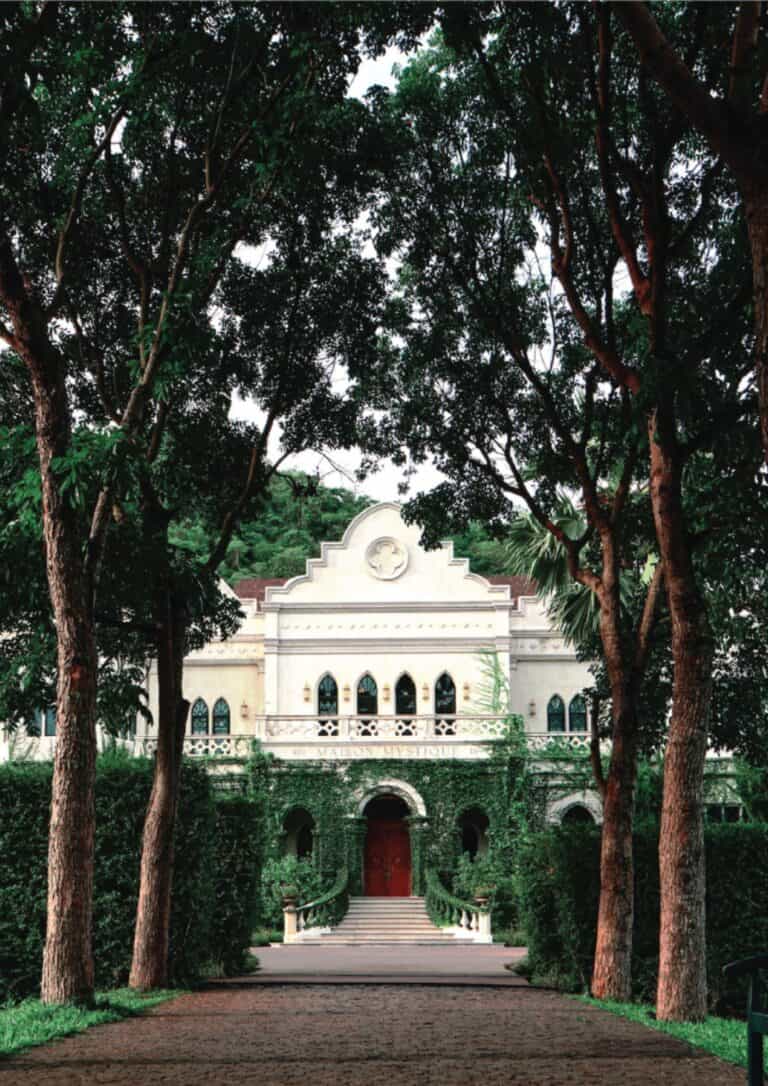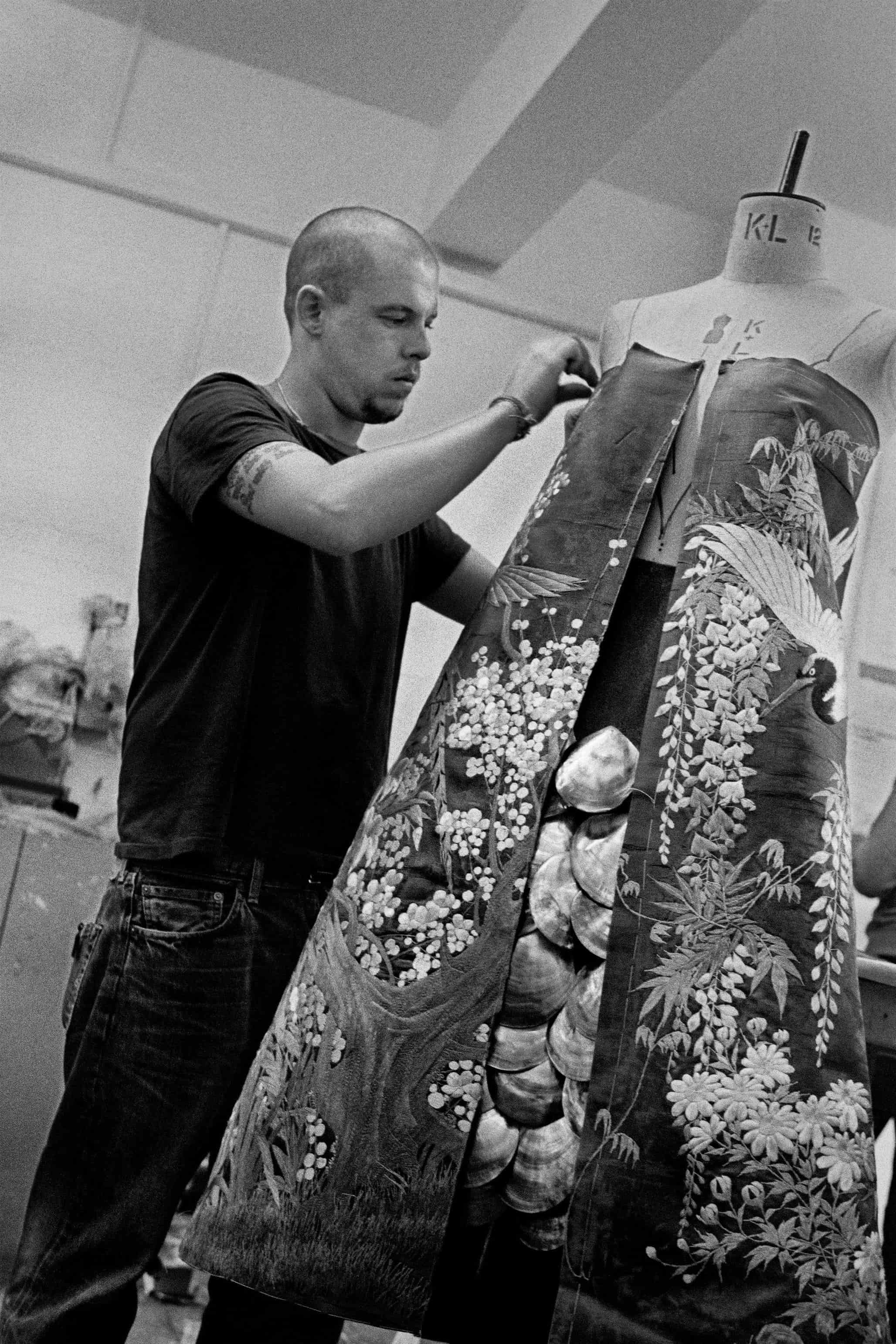
Ann Ray & Lee McQueen: Rendez-Vous
IRK Magazine
Many of the best days begin in a similar setting…a summer day in Paris. It was Haute Couture Fashion week of 2019 when I last slipped into a Sacai gown and found myself in a taxi on the way to an Iris Van Herpen show. As I jumped from one cab to another, by the end of the day I sat at Ann Ray‘s studio diving through 13 years worth of Lee McQueen gelatin-print archives. The acclaimed designer that I thought I knew was much more than an artist and to Ann, he was just ‘Lee’.
It started in 1997 when twenty-something Lee McQueen approached Ann, “I like your images but I’m broke. Give me your photos, I’ll give you clothes.” She was the only photographer he ever allowed backstage. I sat and spoke with Ann for hours as she reflected on memories and unpacked garments that Lee had gifted her, but she had not been able to look at since his passing in 2010. It was emotional; it was therapeutic. Together, they delivered 17 Givenchy shows, 26 McQueen shows, 43 shows in total.
To him, she was more than a photographer. To her, he was more than a designer. A decade after McQueen’s passing, Ann reveals this never-before-seen perspective with the exhibition “Ann Ray & Lee McQueen: Rendez-Vous” on debut in St. Louis, Missouri at Barrett Barrera Projects’ new location, projects+exhibitions. The exhibition pairs Ann’s photography alongside McQueen couture from Barrett Barrera Projects‘ private collection, as well as personal garments that Lee gifted Ann.

“Art and Craft”. 40 x 30 cm. Silver Gelatin Print.
Image courtesy of Ann Ray and Barrett Barrera Projects.
IRK: What is one of your most treasured memories of Lee that you look back fondly on?
ANN: The finale of the “N°13” show, in September 1998, when Shalom Harlow in a white dress was “attacked” and painted by two robots, on Mozart’s music (concerto N°23). It was a moment of absolute beauty, powerful and overwhelming, the kind of moment that you feel is becoming eternal immediately. Many people cried, including myself and Lee.
A very personal moment in 1999, at a Givenchy Couture show. We were late, 45 minutes late, the audience was waiting and the tension was at its climax. Lee was adjusting a garment on a woman, under pressure, I was photographing, and he kindly asked “How is Tristan ?”, naming my dear son. I handled the situation for hours, when many other friends asked the same question, but when Lee asked it, with much kindness, I felt tears coming in my eyes. As a matter of fact, Tristan was not well, my poor baby – 13 months old – was in the hospital for exams (he would be diagnosed with a rare form of osteomyelitis in the spine a few days later, after his Nanny let him fall and didn’t say anything). Well, back to this moment, Lee saw my wet eyes, dropped everything, gave me a hug and questioned me. People around us were staring like “What the hell are you doing? We have to start the show!” But nobody dared to interfere. I said to Lee that Tristan was in hospital, and I was very worried. I apologized for my tears at that very moment, said I just needed 2 minutes to gather myself. Lee took his time, kept hugging me and comforting me and said: “Don’t be stupid! This is fashion, this is crap, it does not matter. We are talking about your son, this is real life, this is beyond important. Your son matters, not this.” Needless to say, I never forgot this moment and these words. I already liked very much Lee, who I met in 1997. I acknowledged his immense talent and big heart since the very first days. But that moment sealed something between us.
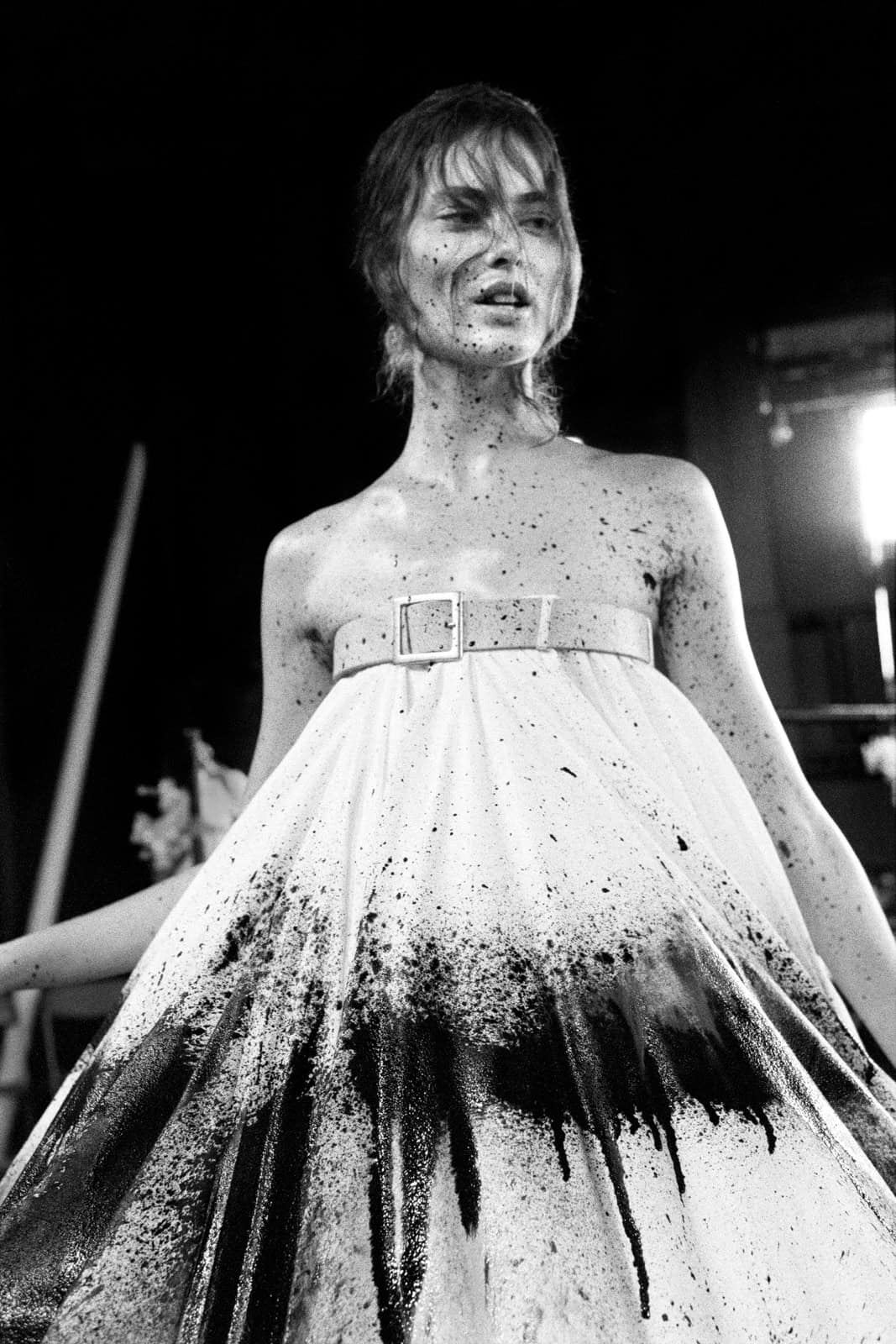
Insense II, 1998. 40 x 30 cm. Silver Gelatin Print.
Image courtesy of Ann Ray and Barrett Barrera Projects.
In 2007, I organized the encounter between two dearest friends, Lee McQueen and Sylvie Guillem. Both were talking of each other for a while, evoking a possible collaboration. Lee would say, with his inimitable accent : “I love Sylvie Guillem! I would love to create something with her!” whereas Sylvie would express her admiration as well, and desire: “I would love to to something with your friend… He is a true artist, questioning and fascinating.” So I invited Lee to come to Sadlers Wells in London in 2007, to see a remarkable performance called “Push” starring Sylvie and Russell Maliphant. As always with Sylvie, the performance was a dream, a gift, moment suspended in time. At the end of the performance, I literally took Lee by the hand to go backstage and meet Sylvie. He was as shy as he could be sometimes – that’s how you recognize the great people and the great artistance: there is no arrogance, especially when meeting people they admire. Sylvie was the same kind of “animal”, deep and sensitive and strong and fragile, so you have to imagine the scene: Sylvie sitting on the stage after the performance, Lee walking towards her, carrying Sylvie’s heavy book “Invitation” that he bought in Sadlers Wells bookshop, these two staring at each other and smiling. Lee sat on the floor too, they talked, Sylvie signed the book. They were both happy, therefore I was equally happy. I’m talking about friendship here. Afterwards, in 2009, Lee & Sylvie collaborated together, Lee created all the costumes for the theatrical piece “Eonagata” by Robert Lepage, with Sylvie and Russell performing. I am very proud of this: to have a little helped to make this happen: the first and only time when Lee created costumes; and it was for Sylvie Guillem. As any other great designer, Saint Laurent, Kawakubo, Lee entered the theatre world. Through a large door.
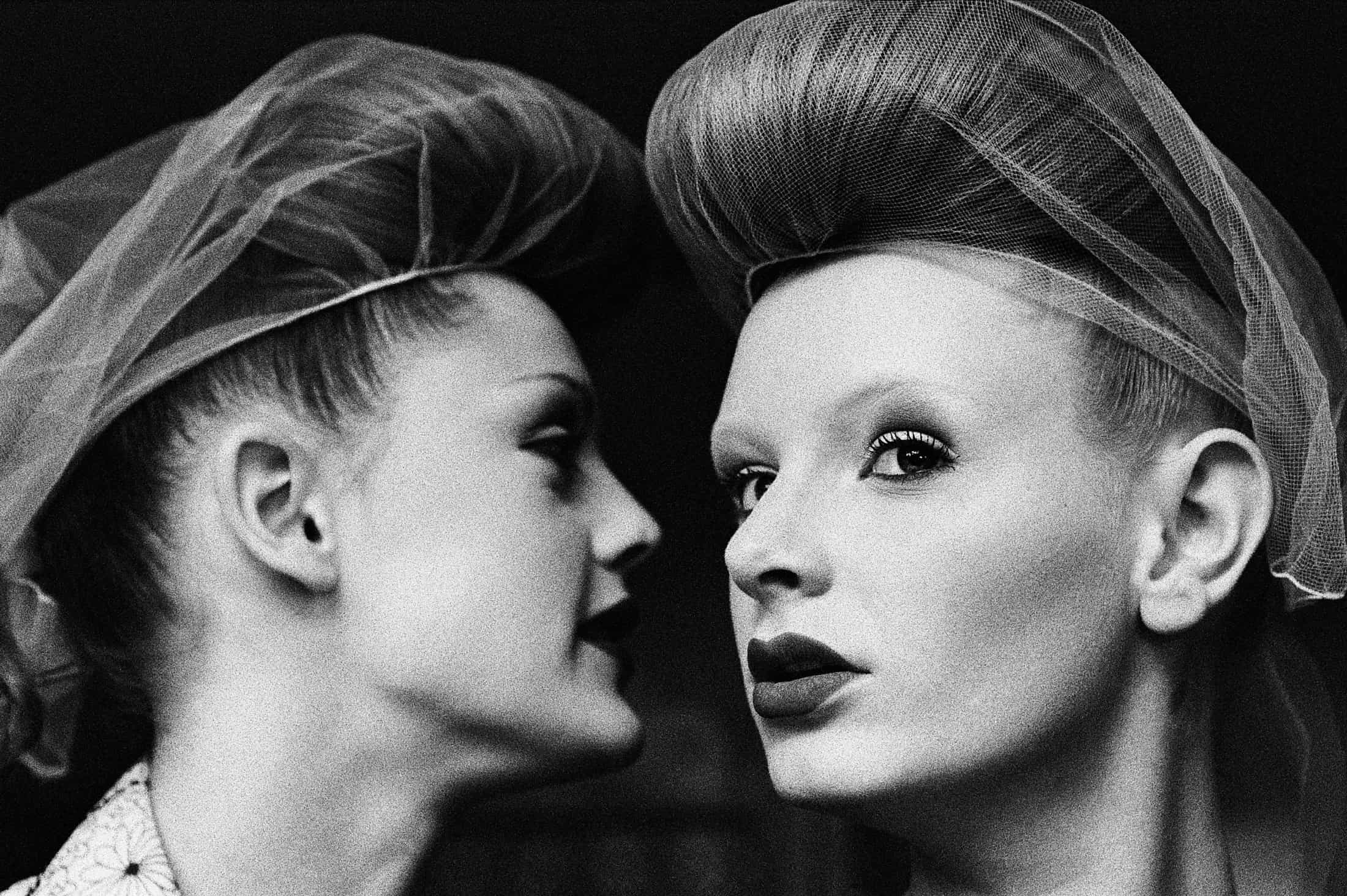
Whispers I, 1998. 40 x 30 cm. Silver Gelatin Print.
Image courtesy of Ann Ray and Barrett Barrera Projects.
IRK: How does Lee’s work continues to inspire your art today? What about Lee’s friendship inspires your personal life or relationships today?
ANN: The answer is very short and very simple. Lee encouraged me to be myself, to go as far as possible to try and find who I am really. This means standing proudly by your work, nothing is impossible, and, beyond everything: no compromise. I would certainly not be the same person if I hadn’t met Lee. I know what I owe him. As I know what I gave him.
In Art, compromising is not an option. The moment you stop to search, work, suffer (not my favorite word but that is part of the creative process, of course), try, fail, try again, enjoy, during very long hours, if you decide to “take it easy”, it simply does not work. As of now, I am trying to find a balance between my no-compromise approach in my Art and joy. Pure joy. Because if you don’t enjoy what you do, what is the point? I cannot scrutinize my fears, my nightmares, my crack-ups all the time. I love life too much to disdain happiness. But as far as my consistency is concerned, there is no half-way. I can stand proudly in front of the mirror, and I have no regrets.
I try to be strong in life, and fragile in what I create. Something like that. For a wide part, that is how I remember Lee.
And of course, with my family and closest friends, I give them strength – and I can be fragile too. Friendship is the ultimate gift of life. Love, family, these are different matters. Friendship is chosen. And fed. What you get is what you give, or more simply: you don’t count.
Of course many of my friends are artists too. Certain moments of my life, spent with special artists, are my pillars. The foundations of my inner cathedral, where I can wander and reconnect with who I am or who I wanted to become. I am talking about the process of life here. You decide to become who you are, and that’s why you decide whom you want to meet. Some encounters are marked with the seal of serendipity, of course, and that is what makes life wonderful. But then, afterwards, you decide to keep walking side by side, or not. You choose your influences. As you choose where to put your devotion.
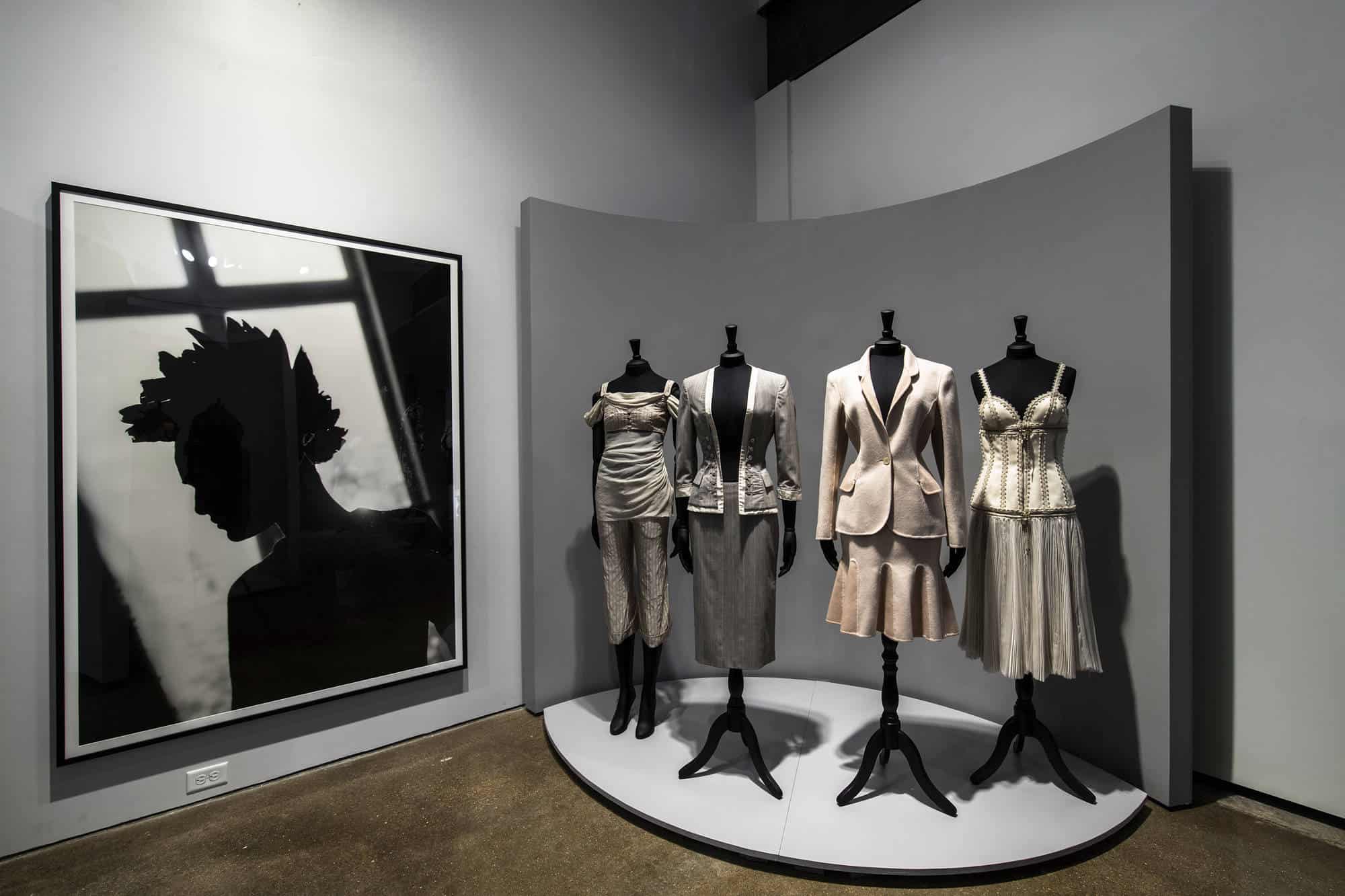
Installation View. Ann Ray & Lee McQueen: Rendez-Vous at projects+exhibitions.
Courtesy of Barrett Barrera Projects. Photo by Virginia Harold.
IRK: What is the best thing Lee taught you as a creative and as a friend? What do you feel that you taught him in your friendship?
ANN: Lee gave me his trust. This is magic, this is beyond. Trust is a very fragile thing. You give it to somebody, you open yourself, you implicitly accept the vulnerability that comes with it; and then if you were wrong to do so, if someday the trust is broken, you cannot fix it. It’s gone. You don’t decide rationally to trust somebody: you feel it, you give your trust, that’s it. You don’t control the process. That’s why people should think twice before breaking trust. Full trust can be given just once.
I can say that Lee & I we fully trust each other. That was beautiful. Referring to this almost famous quote now, “You have my life in pictures”, that Lee pronounced in 2009 : it says it all. So maybe Lee taught me what is real trust. Amongst many other things he taught me. Being close to him was a gift in itself, a fantastic open window. Where you may jump, and fly.
What I taught him…who am I to answer this? … Maybe… Maybe I materialized his romantic side, his tender side, in my photographs, as well as his strong, savage, fierce side. Maybe he felt understood. It’s certainly a great feeling to be understood. Maybe he saw in some of my pictures what he was trying to express, at his own risks. Certainly, he knew that I loved him and he could ask me anything.
I wish I could say that I taught him to love himself. At least physically. It broke my heart when he spoke like that: “Can you imagine living with my face in that land of beauty?”. I said clearly and loudly that I found him beautiful, however this not-so-funny joke came back often over the years, like this: “Make me beautiful! Tough job! AHAH”, in 2000, before our intimate portrait session.
Lee was very beautiful in my heart and in my eyes, and in many of my photographs too. I want to believe that I taught him that : to reconcile with himself, and with his beautiful face.
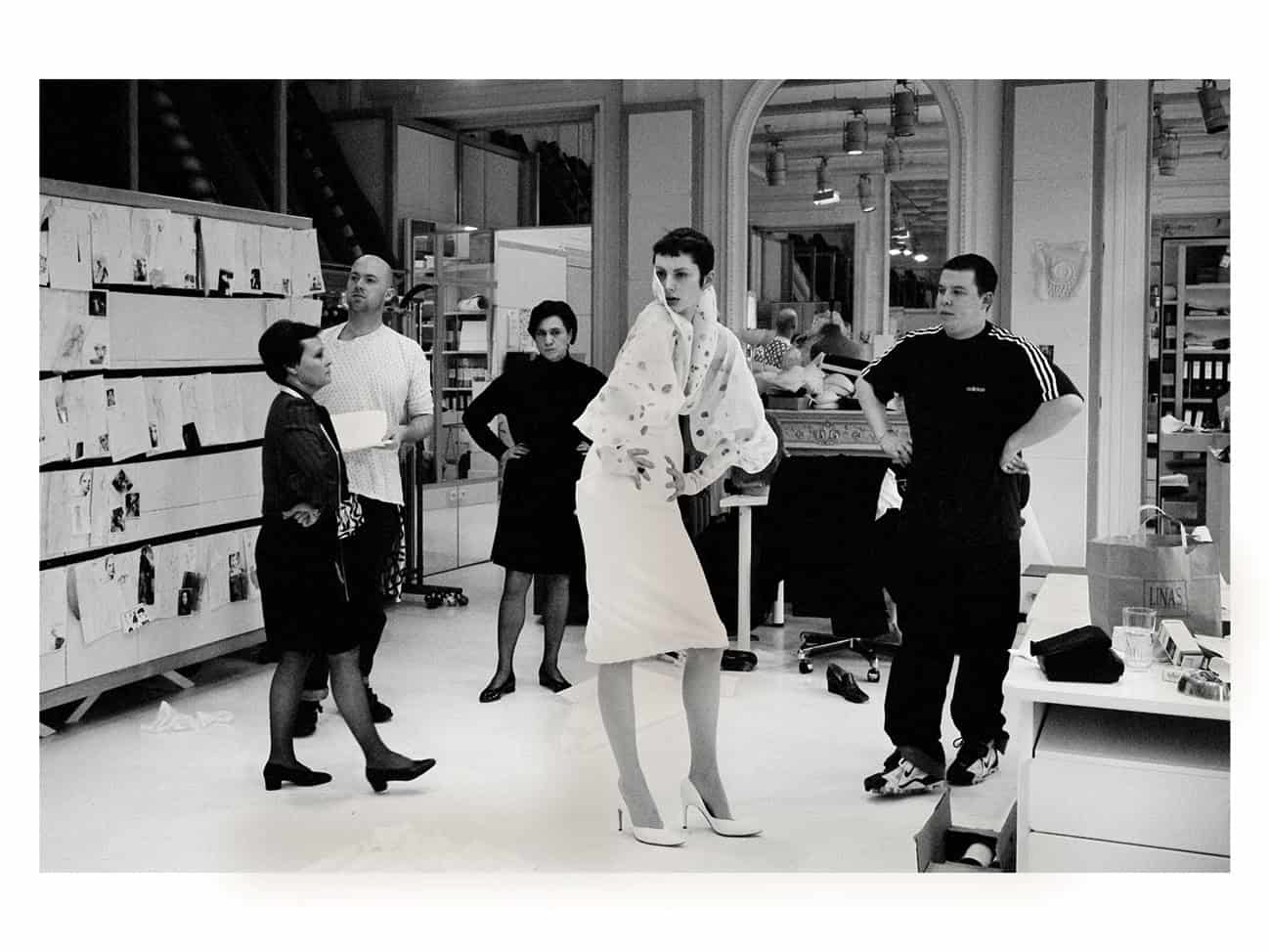
Day One, 1997. 40 x 30 cm. Silvery Gelatin Print.
Image courtesy of Ann Ray and Barrett Barrera Projects.
IRK: What was your first professional experience with fashion photography? Your first fashion show?
ANN: There were 2 kinds of experiences.
First, as a beginner, I was building my “fashion” portfolio, created stories and worked hard on these. Putting the bar high. Then I was going to meetings to show my prints; most of them would have strange comments on my photographs: “This is TOO beautiful… This is TOO artistic… This is strange… Your photographs look like portraits more than fashion…”. So I started to work for various magazines, not so many. I managed to worked for French, German, Italian, Canadian, Japanese magazines. I found my way. I remember Suzannah Frankel, for instance, when I was coming to her office in London, to present the result of my attempts for a fashion story. I was sitting in front of her with a Kodak yellow box filled with prints. She would smile and ask, “So, what crazy thing have you been doing this time?” and we laughed. Suzanna published in The Independent magazine some fashion stories made with cyanotypes, hand-painted pictures, all sorts of things. She trust me, as Lee did. I was and still am very grateful. I found a few people like Suzanna on my way.
As a child, my Mum would often say to me, in a gentle way, “What’s wrong with you? Why can’t you do things like everyone does? Why are you always trying so hard to be different?”. Now that I am not a little girl anymore, it’s interesting for me to come back on this.
As a child of course I didn’t know precisely what I wanted to do with my life. However, I clearly remember what I didn’t want: I didn’t want to be ordinary. That was crystal clear, and a very strong feeling and will. I guess it’s still true. If it’s ordinary, or easy, I’m not interested. Because the process is everything, the result is always a little dead. What turns me on is the process: the people you meet on the way, the search, the attempts, the work. That is what I love in any creative process.
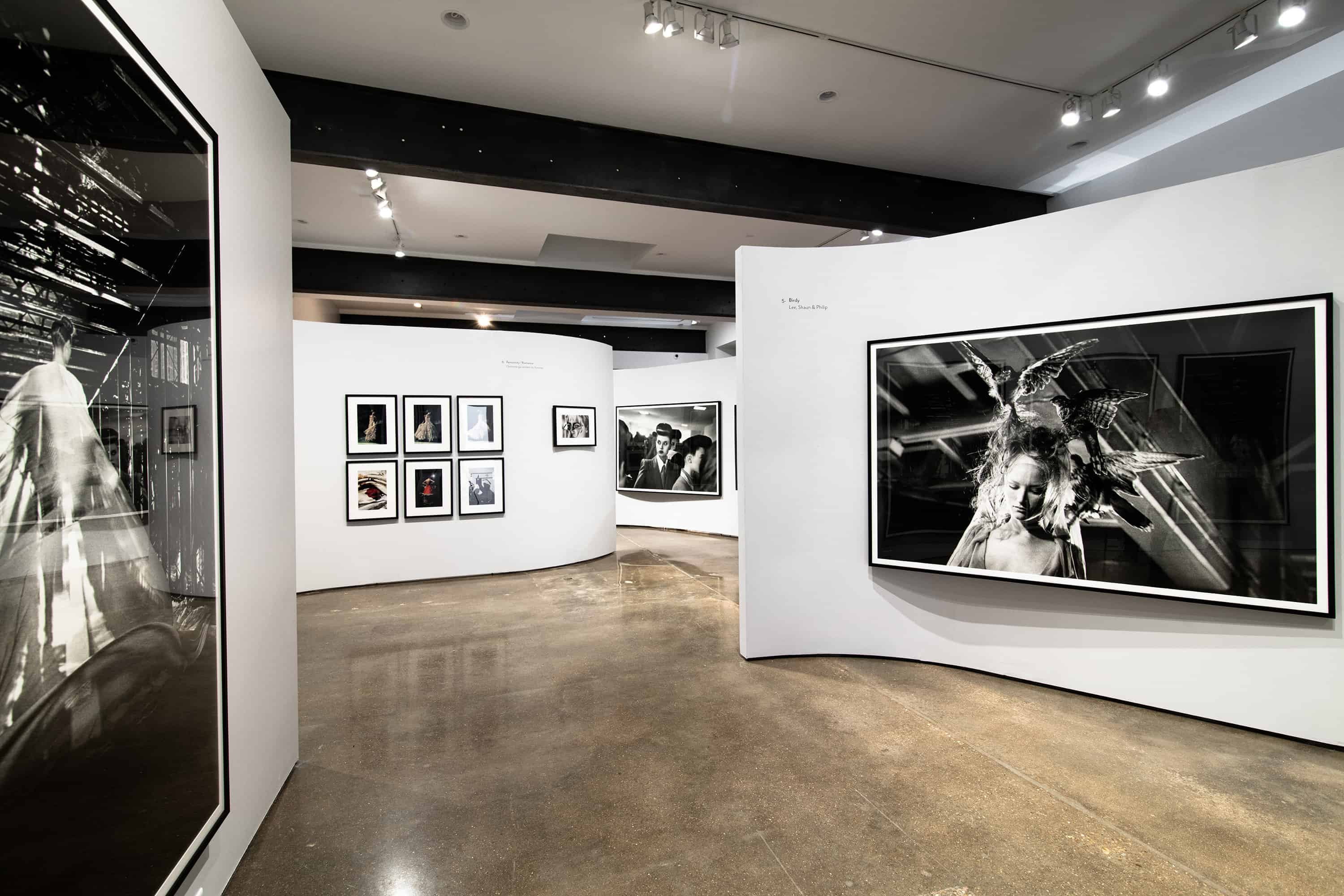
Installation View. Ann Ray & Lee McQueen: Rendez-Vous at projects+exhibitions.
Courtesy of Barrett Barra Projects. Photo by Virginia Harold
To cut a long story short, after I met Lee it proved impossible to compromise and do “standard” fashion stories. It was just impossible. So I stopped quickly these (highly needed) jobs, that was tough, but the only possible way. I would just keep what was consistent with my vision – like with Suzanna.
Also, I had other things to do. Meeting all kinds of artists. Starting working with the Paris Opera and the Metropolitan in New York. Doing my personal things: writing, drawing, photographing…
As for what is labelled as “backstage” photography, my first experience was for John Galliano. I was living in Tokyo, and I made something very special for Givenchy Tokyo. Like a unique book/object, a black box filled with boards and photographs, like a book, really. They loved it and send it straight away to John, who wrote me back (!), and then just like that I was in Paris in July 1996 for his Couture show at Givenchy, that’s what he asked. The set was a forest, the garments were magnificent, the models were beyond beautiful, I was observing Naomi Campbell, Linda Evangelista, Eva Herzigova… Stephane Marais was doing the make-up, Odile Gilbert the hair, and the result of all these talents was a dream. I enjoyed it so much.
Then, in October 1996, they announced me that John was leaving to Dior, and a new “highly talented” designer named Lee Alexander McQueen was coming for Givenchy. And then they asked me to spend 2 weeks with Lee in the ateliers in January 1997 to photograph his creation of his first Couture show for Givenchy. The rest is history.
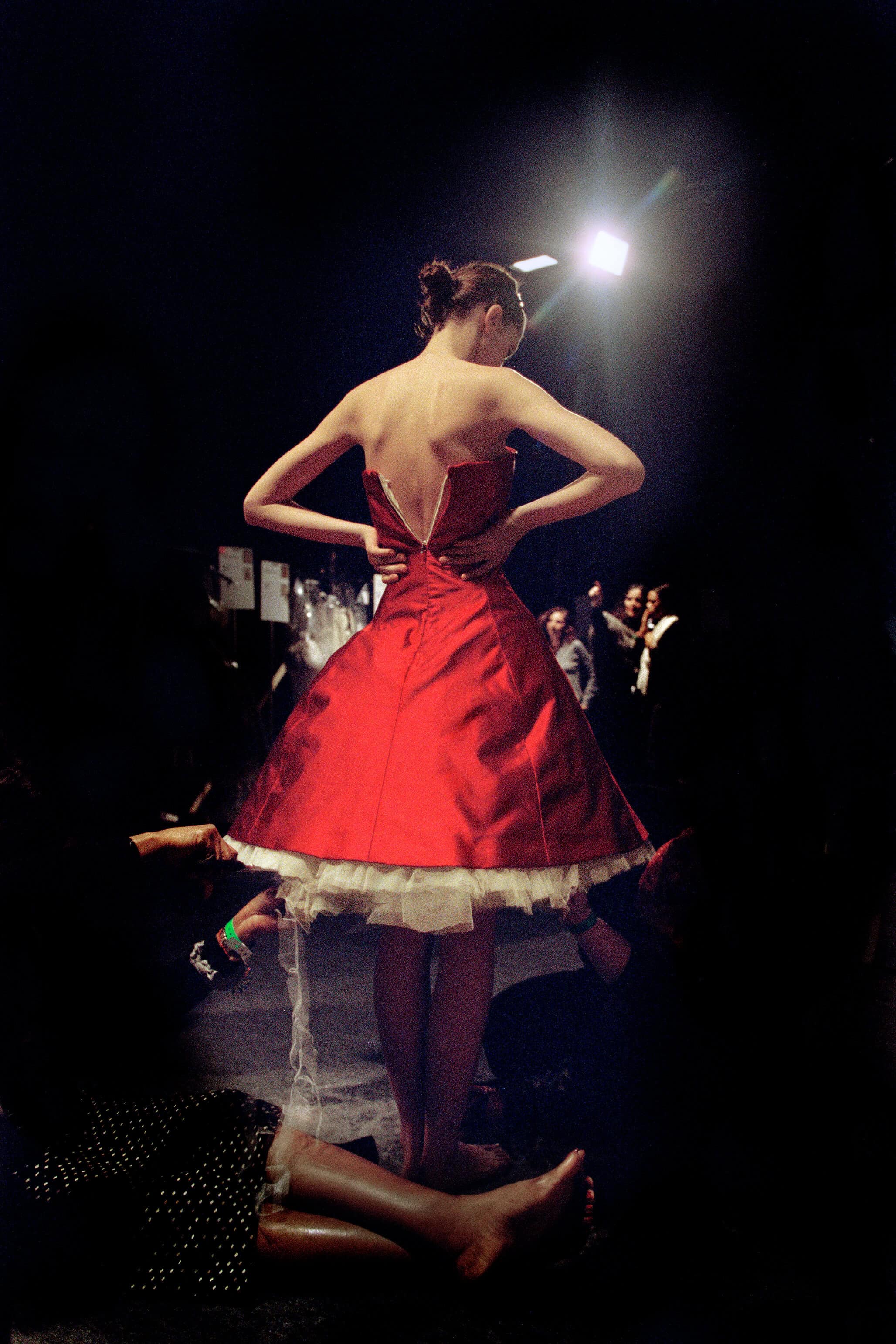
Flesh and Blood, 2008. 40 x 30 cm. Color photograph.
Image courtesy of Ann Ray and Barrett Barrera Projects.
IRK: Would you want to work for another designer or design house today?
ANN: Yes, I would love to work with some designers and houses again, that could be interesting – depending on who, and in which context. The fashion industry has changed so much in 20 years, there is less and less creativity I’m afraid; it’s a huge business rather than a laboratory for creation, however there are still some uber-talented designers who deeply interest me.
In 2017 I worked for Schiaparelli, because I love this house (the history of the house is so related to arts & artists) and because the Artistic Director was a friend and very kindly asked me to work for him. So I did some analog photographs in the Schiaparelli salons for the Couture show, and loved it. It was divine. Unfortunately, in 2018, when asked again, I was too busy with my exhibition “Les Inachevés” in Arles to do it again. Choices, you know…
For the future, I could contemplate doing it, being driven, as always, in my choices by the human and the artistic factors.
What would excite me would be to collaborate with fashion houses on their global vision – to tell stories in my own way, through the art of photography or through Art Direction, in accordance to the house’s fundamentals. Understanding the codes of a house is something I like to do. Analyzing the past, observing the present, imagining the future. All in a global visual harmony that makes sense, and can be developed over the years with consistency: same and different. That’s how you create an “image”.
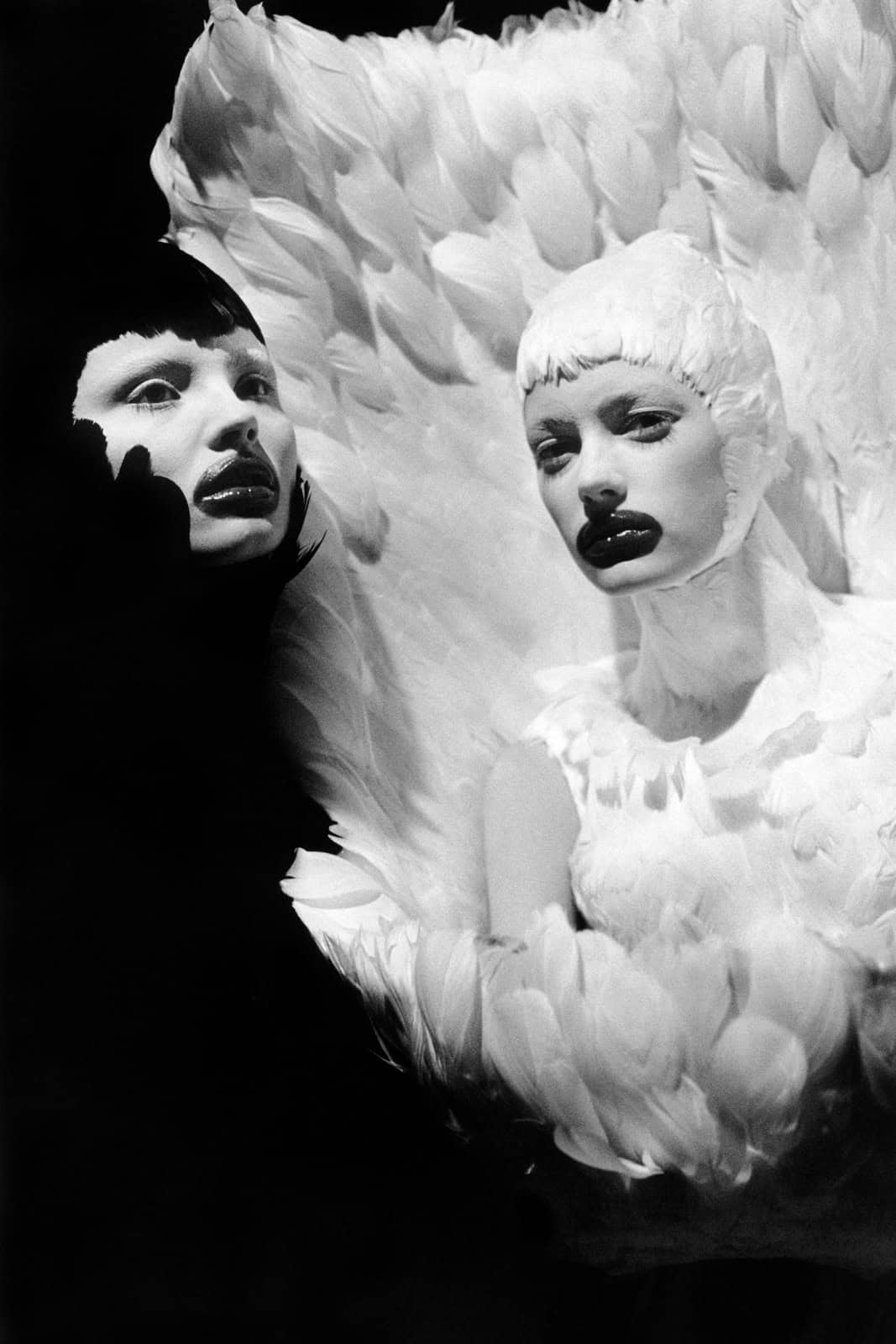
Unfallen Angels, 2009. 40 x 30 cm. Silver Gelatin Print, 2009.
Image courtesy of Ann Ray and Barrett Barrera Projects.
IRK: What are your dreams, both new and old?
ANN: As a child, I always wanted to fly.
As an artist, I want to express myself, question and relate to all aspects of humanity.
Follow my dreams, that’s the only possible way. Give hope.
As a woman, I want to encourage collaborations with other women artists.
To be committed in all sorts of actions to help women, by all means.
As a human being, any form of violence is unacceptable.
In particular, any form of violence on children makes me sick.
So one of my dreams would be to eradicate violence from this world.
And my personal dream is a big house by the sea, with plenty of bedrooms to warmly welcome my family, my friends, young artists… All sorts of people. La maison du Bonheur, by the ocean. A place where people can rest and breath and think and dream. And experience joy.
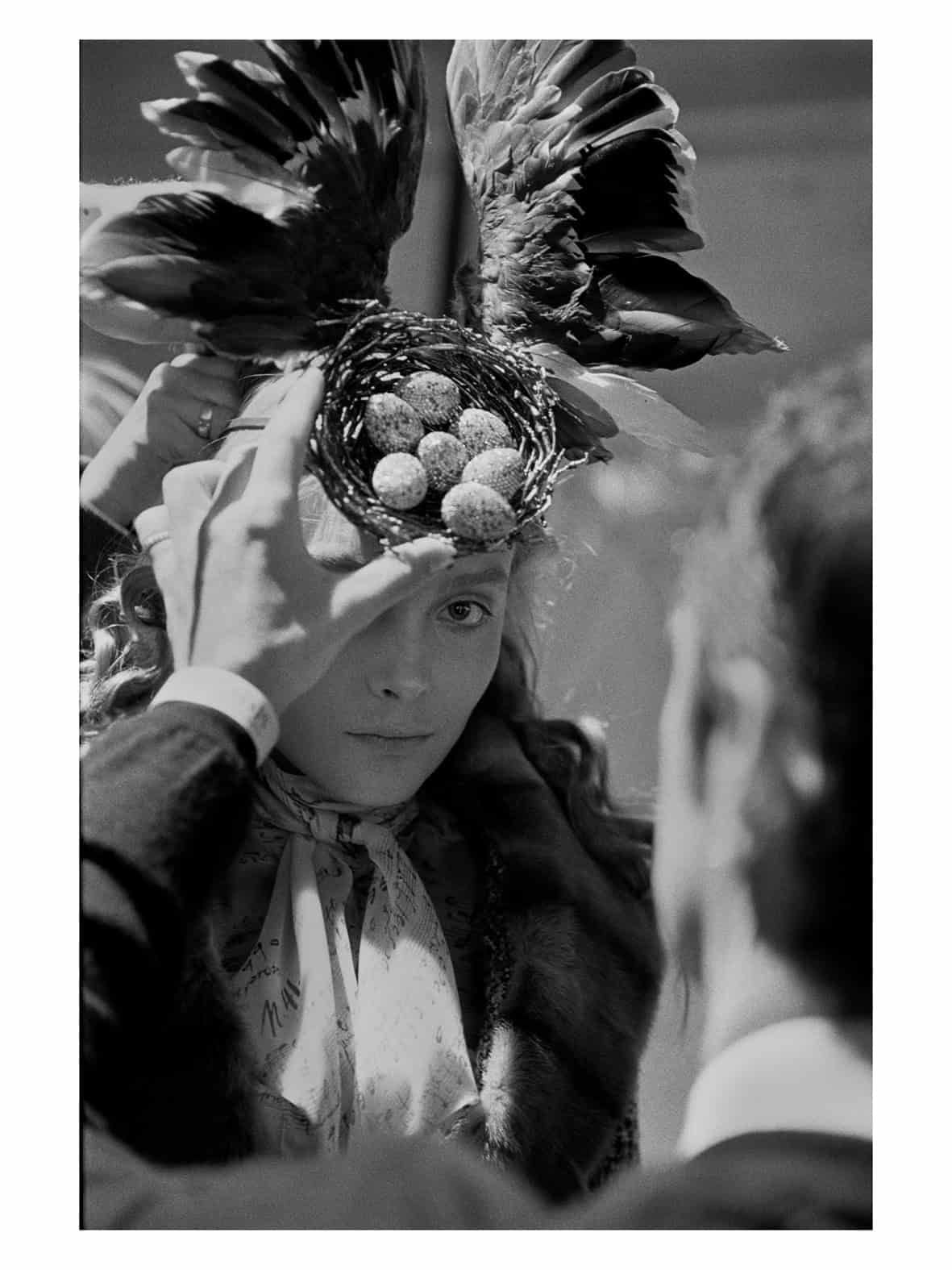
Cycle, 2006. 40 x 30 cm. Silver Gelatin Print. Courtesy of Ann Ray and Barrett Barrera Projects.
IRK: This exhibition explores a never before seen intimate perspective of Alexander McQueen, or as you know him, just ‘Lee’. What do you hope viewers feel or take away from this exhibition?
ANN: As in Arles in 2018 with “Les Inachevés”, my goal was to express the truth of the legend. To be back to the spirit of the man and the essence of the oeuvre.
“Rendez-Vous” is also about friendship. About people who make things happen: Lee Alexander McQueen, Susan Barrett, maybe myself from time to time. It takes so much work, and energy, and dreams to make things happen.You don’t do anything alone. You need help, friends, collaborators, assistants, etc… Good advice. Warm support. Tons of work. Luck. It’s an alchemy. “Rendez-vous” celebrates all that: the beauty of magic encounters, the wonderful feeling of being connected. And the achievements, when things do exist, when they are materialized: that is genius. This word was often used about Lee, (he denied it, he never saw himself as a genius, he was far too clever for that), but actually his immense talent was of course to be inspired and creative, but most importantly to make it visible.
It is the same for an exhibition: first you dream about it, you imagine (meaning you organize your ideas), then you find a way to make it – and to share it. It is truly an invitation to the visitors to see, and feel. To read in the photographs a universal message about life, death, friendship, creation and love. Not less than that! And to gather all this, when drawing the portrait of an artist called Lee Alexander McQueen.
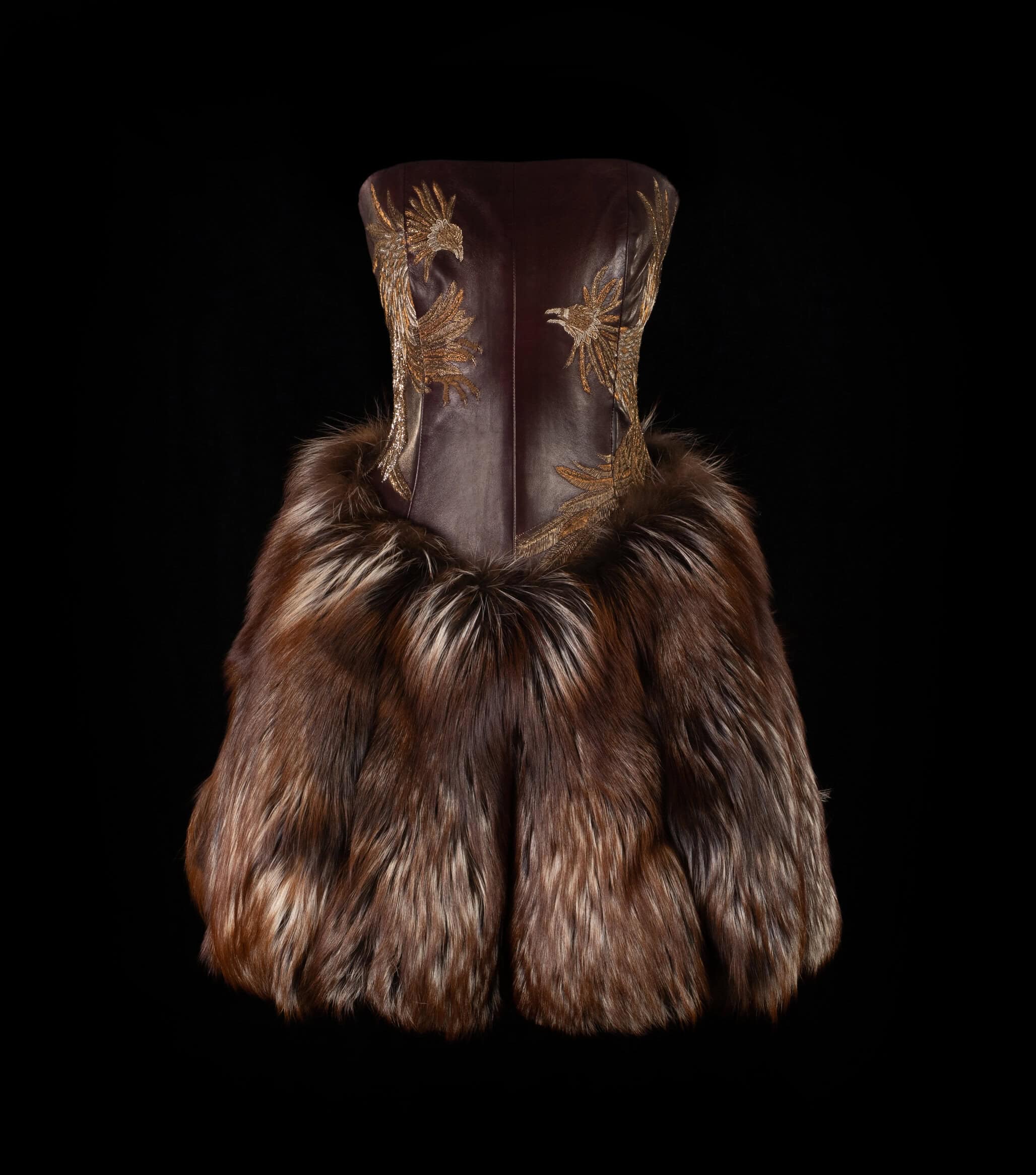
Alexander McQueen Autumn/Winter 2008. Courtesy of Barrett Barrera Projects and RKL Consulting. Photo by Sarah Carmody.
In my photography, I am looking for the unexpected, and the unfinished. I love fragments, because they say enough and not too much. It’s always good to preserve a part of mystery. I am looking for things I have never seen before, or I have never felt before. And then I transmit. It’s all about circulation and energies, so yes, photography is a capture ; when photographing you capture something. A fragment.
In “Rendez-vous”, we are sharing some fragments carefully chosen with Susan. It is an invitation for the visitors, to embrace Lee McQueen’s visions, to question themselves, to be punch-drunk with beauty. It’s like drinking an elixir, that may leave you wonderfully confused.
The exhibition is intimate because it’s true. People feel everything, you know. What they feel depends on what you gave. If you are ready to commit yourself, to go as far as possible in what you are doing, people feel it. It’s because I over-exposed myself that I may touch some people. If I was holding things back, it would not work. Every time I have been working on a book or an exhibition about Lee McQueen, it is difficult and exhilarating at the same time. This is the price of truth. I cannot work any other way, I owe that to Lee. If you want, I feel like a passenger, a careful one, I must transmit as much as I can, with poetry and radical honesty. I must celebrate Lee with joy and dignity, in the best possible way. And hopefully, I guess people feel all that: the direct access given to them, to Lee McQueen’s universe. In the most decent way.
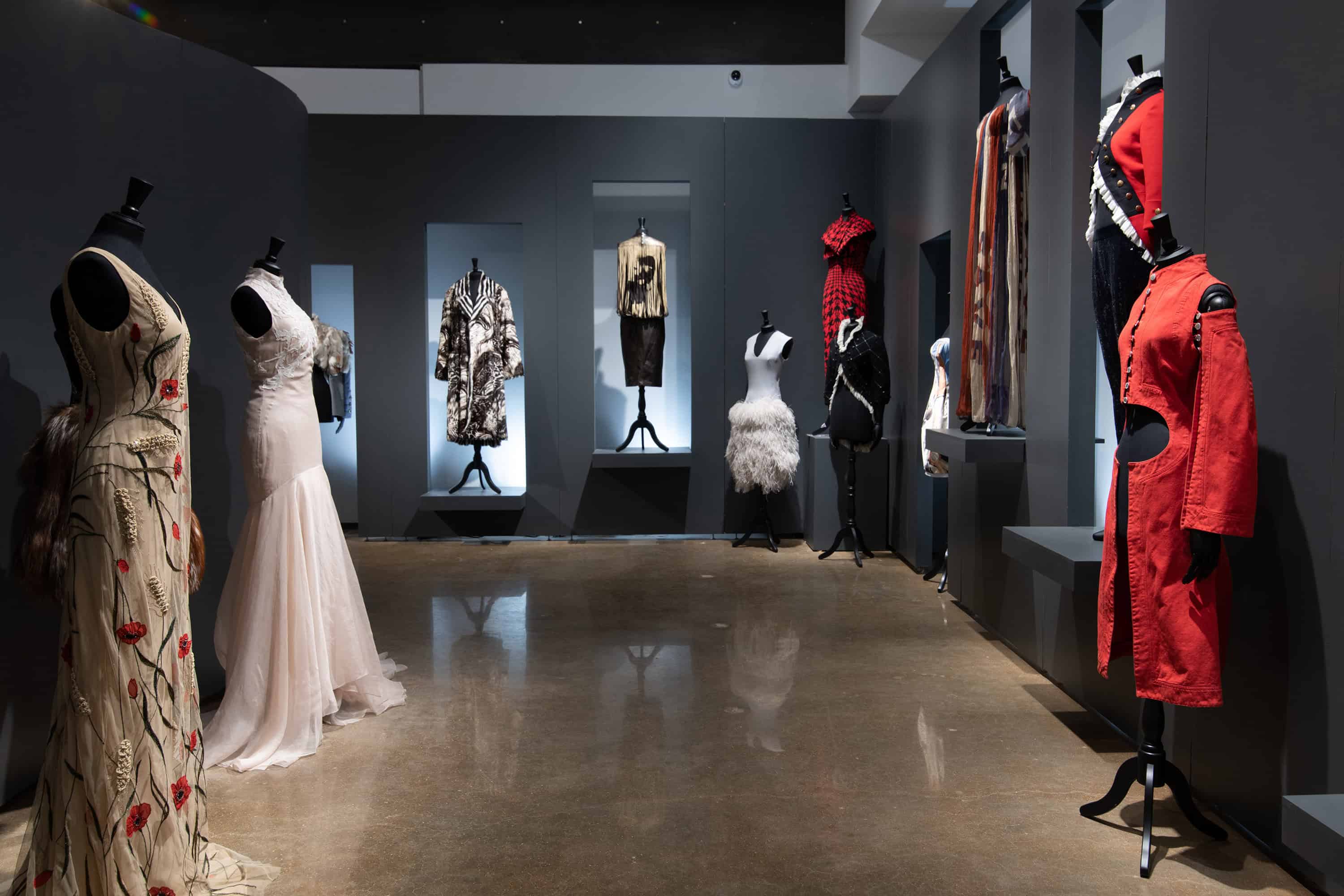
Installation View. Ann Ray & Lee McQueen: Rendez-Vous at projects+exhibitions. Courtesy of Barrett Barrera Projects. Photo by Virginia Harold.
IRK: After 13 years of photography for McQueen, you have an incredible archive of your work that would take hours or even days to go through. Can you describe the process of selecting the specific photos featured in ‘Rendez-Vous’?
ANN: A camera is just a necessary tool. I photograph with the eyes. Eyes wide shut, in my soul and in my dreams : eyes wide open, in the real world. That’s why the most terrifying photographs are the one I have not taken, because they cannot be shared. They are all in my mind, and I certainly use them every time I take a new photograph. I constantly try to find a balance, to know how too far I can go.
I know for sure that in each photograph there are the thousands of photographs that I have taken before, over 20 years. The back of my mind works for me and knows before me. All photographers are aware of that: the best picture is never the one you expected. If you had this clear thought, “This one will be fantastic”, you already lost it. Things happen elsewhere, in the combination of the present sensitive moment, my experience, my sincerity – or devotion, or commitment, I don’t know how to call it -, and the circulation of energy between myself and the subject – in front of me.
“Who are you?” is the question I endlessly repeat when I take photographs. Not only for human beings : Even if it I photograph a landscape, a drop of water on a window, or a ray of light on a woman’s arm. It is also the question for the future viewer. I’m not looking for an answer, I am looking for the process of an answer. Finally it becomes more a conversation that a question. It is very spiritual, indeed.
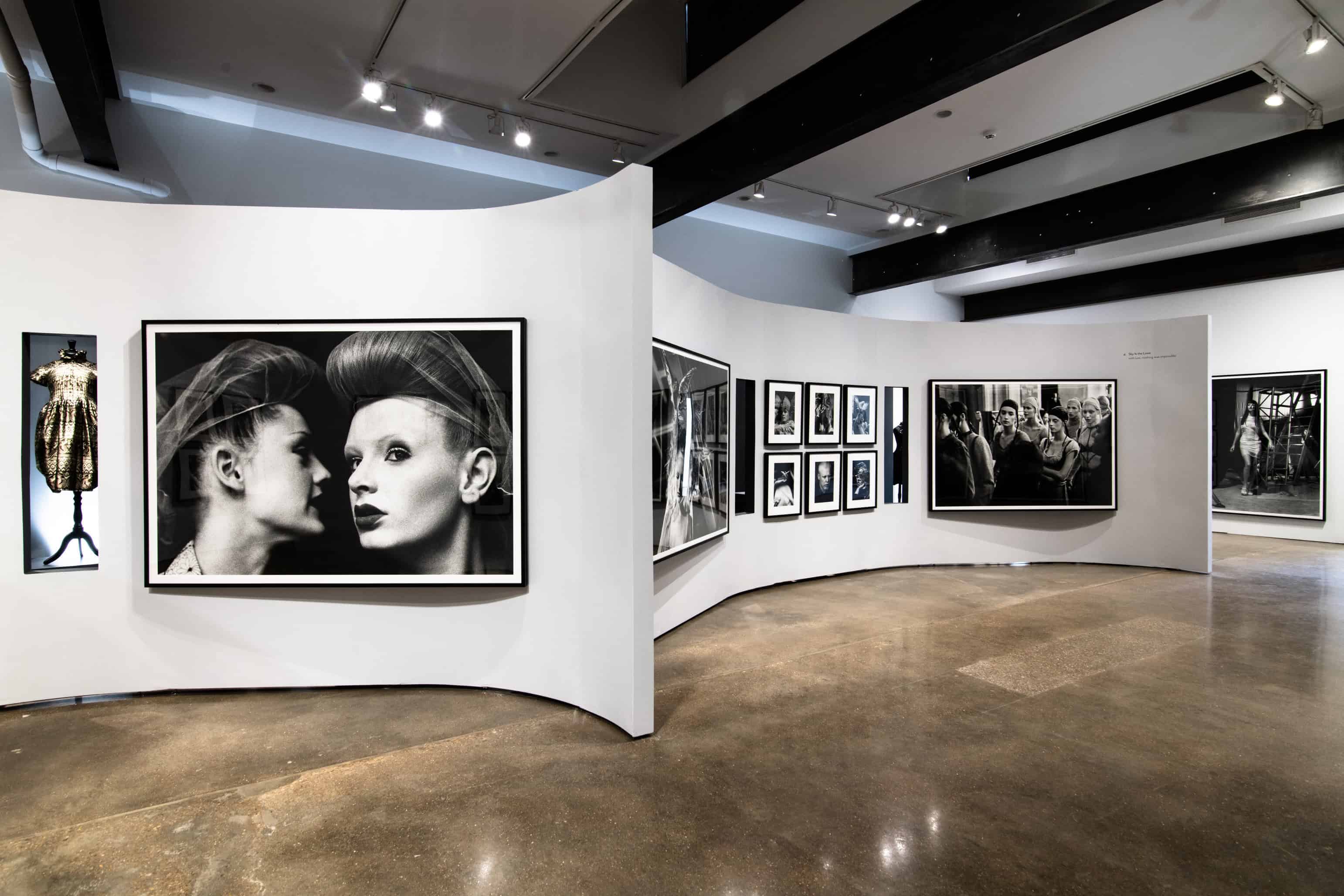
Installation View. Ann Ray & Lee McQueen: Rendez-Vous at projects+exhibitions. Courtesy of Barrett Barrera Projects. Photo by Virginia Harold.
IRK: What is your favorite part of the creative process and what is the most challenging?
ANN: A process is chaos. Chaos is life, that’s probably why I love chaotic people who don’t fit in. They have a unique radiance. The process is the most interesting thing, in anything.
I can feel something that is screaming inside and wants to be expressed, and I will only know precisely what it is during the process. It is vague and precise, it will be fully revealed during the making, that’s the Beauty of it. The more you dive, the deeper you go.
This is deeply human and profoundly fascinating.
Work, work, work, attempts, researches, and then: light.
I have been working extensively on collages recently, and sometimes nothing falls into place – and some other days and nights everything suddenly appears, I just have to work hard, quickly, to materialize all that is in my mind with so much clarity. It is weird, but at this point it becomes easy: it’s all in my head, I just have to make – and make it appear. In any shape or any kind of medium: it could be words, film, collages, photographs…
Sometimes you cannot make it. This is challenging. It becomes your priority, or your obsession: to find a way to make it exist, whatever it takes. You cannot go on with your life without making it.
The end of the process is sharing. Sooner or later.
Making a good photograph is easy; making an outstanding photograph is much more difficult. It happens when you quit your comfort zone. When you give up any kind of protection and start and explore your danger zone.
My process, in anything I do, is a commitment : an over-exposure. Being an artist is a life process – a process during which you may be careful not to forget the Art of Life.
Be careful with the future, because it will never come back.
Even in 2020, I dare to say this: I want to follow my dreams. You can confine the bodies, but you cannot confine the mind. Nor the souls.
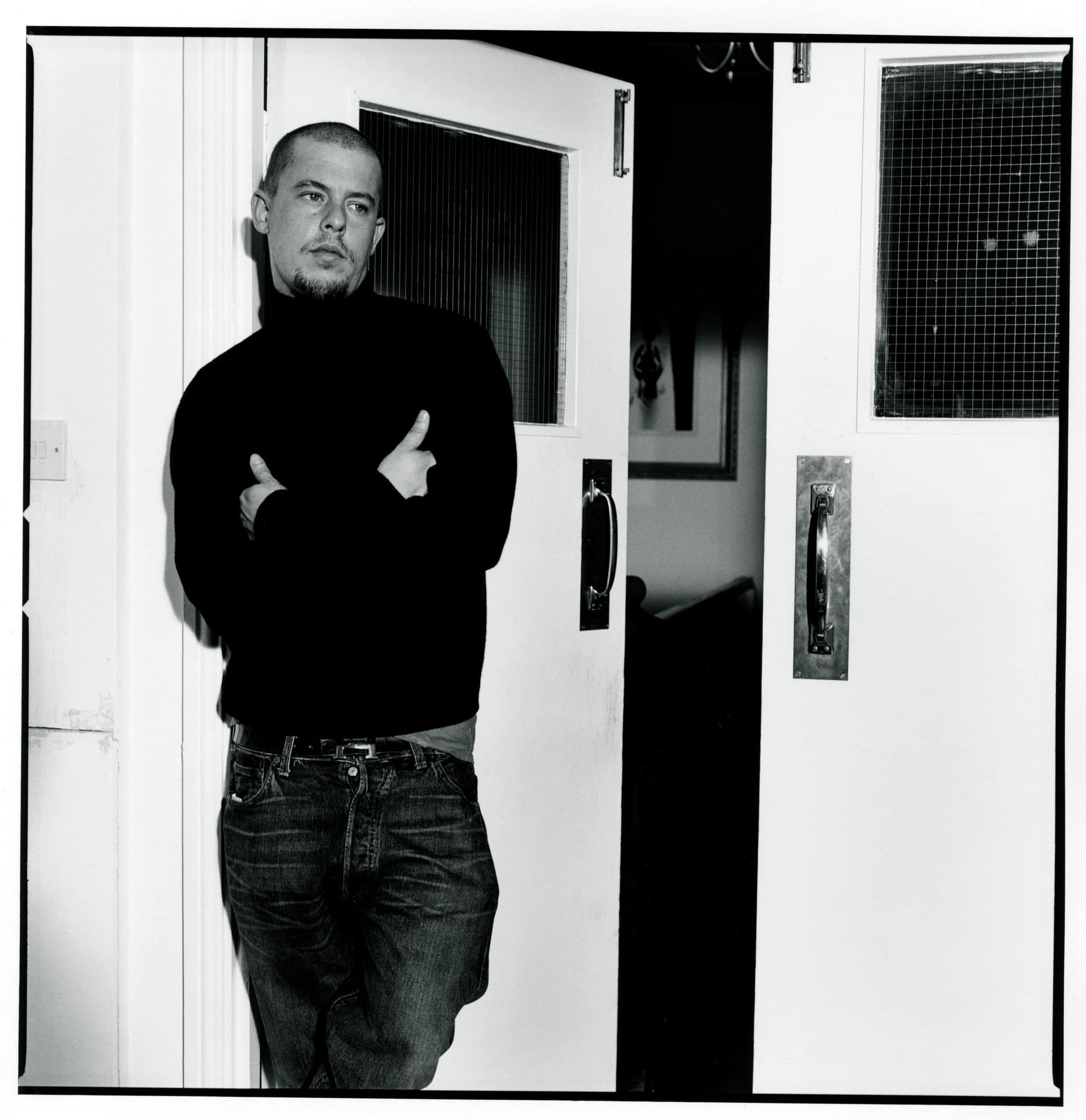
Home, 2000. 40 x 30 cm. Silver Gelatin Print. Image courtesy of Ann Ray and Barrett Barrera Projects.
Share this post

